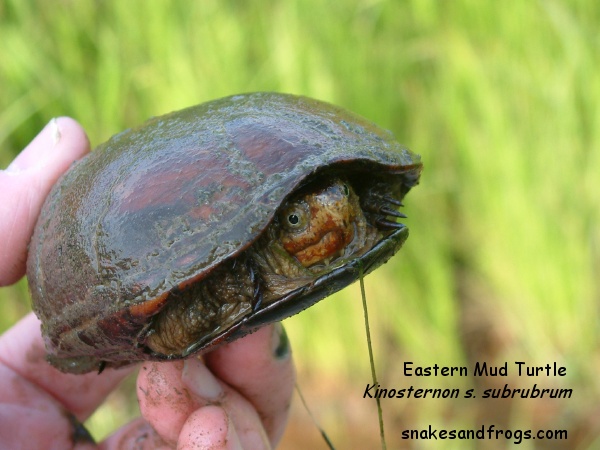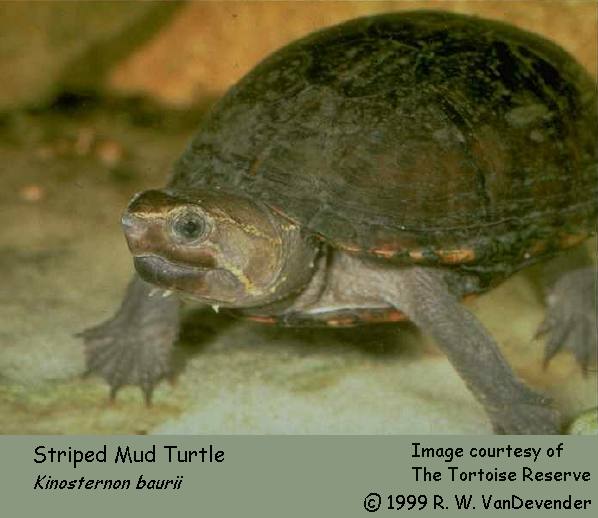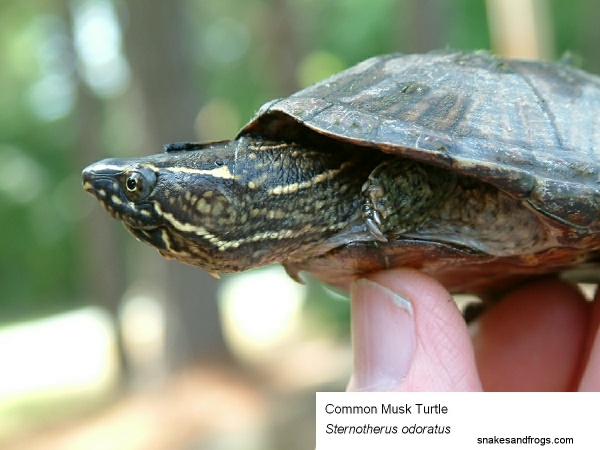Mud and Musk Turtles
- Eastern Mud Turtle (Kinosternon subrubrum subrubrum)
- Striped Mud Turtle (Kinosternon baurii)
- Common Musk Turtle (Sternotherus odoratus odoratus)

Other Images of Eastern Mud Turtles


Other Images of Common Musk Turtles
Mud and Musk Turtles are similar looking small, freshwater turtles. Adults have topshell (carapace) lengths of 3 to 4 inches. The topshell of the Musk Turtle usually has a pronounce ridge from front to back. The topshell of the Mud Turtle is smoother and more rounded. These turtles walk about the bottom of water bodies searching for slow moving prey, carion, and vegetation. These turtles can be seen in shallow water or found embedded in mud as revealed by small (2 to 4 inches diameter) spots of muddy water.
Mud and Musk Turtles can be differentiated by examination of the lower shell (plastron). The lower shell of the Musk Turtle is considerably smaller than that of the Mud Turtle. Both turtles have front and rear lower shell hinges; however, the hinges of the Musk Turtle as less apparent and less moveable. Neither turtle's lower shell is sufficient to provide complete enclosure of the head, legs and tail, as in the Box Turtle. The pectoral scute (the parts of the lower shell immediately adjacent to the front hinge is triangular in shape on the Mud Turtle and roughly rectangular on the Musk Turtle.
Eastern Mud Turtles are found throughout South Carolina. Eastern Muds and other subrubrum subspieces generally range along the eastern coastal states from New Jersey to Texas, and into parts of Arkansas, Oklahoma, Tennessee, Kentucky and Illinois. The Striped Mud Turtle is found only in extreme southwestern portions of South Carolina near the lower Savannah River. Striped Muds are also found in coastal Georgia and the pennisula of Florida. Common Musk Turtles are found throughout South Carolina. They also range throughout most of the eastern United States, and west to eastern Nebraska to eastern Texas.
Mud and Musk Turtles have long necks and strong jaws. If pickup, they will often attempt to bite. These turtles will also emit odorous musk. As one can infer, the musk of the Musk Turtle is stronger.
Return to SC Turtle Index
updated: January 23, 2006
Contact: South Carolina Reptiles and Amphibians